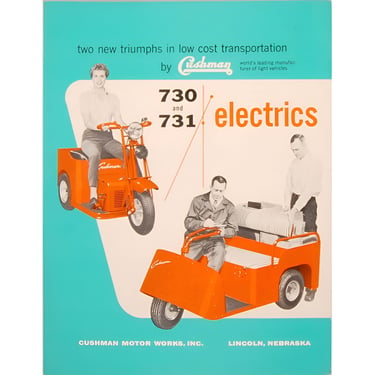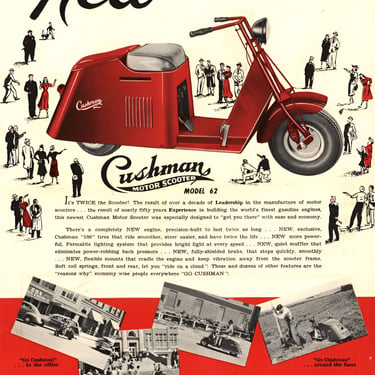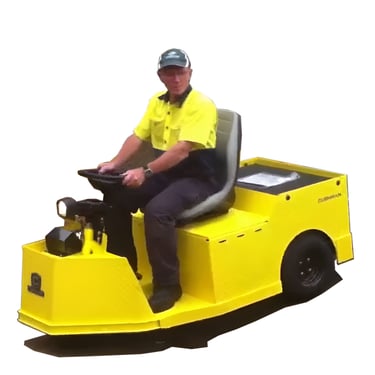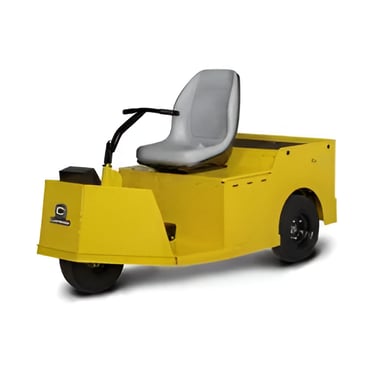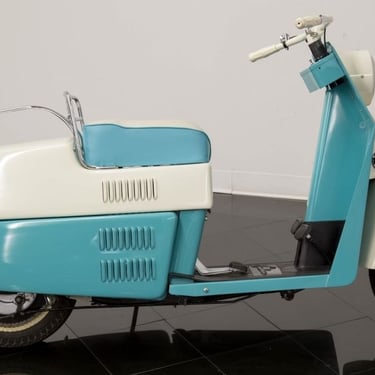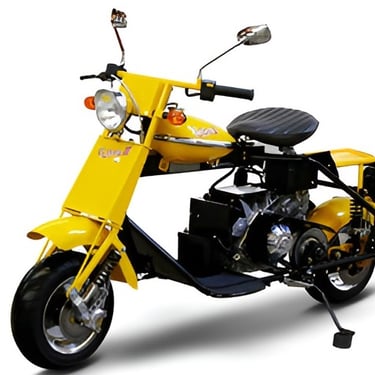Cushman Motor Works of Nebraska: A Century of American Manufacturing Excellence
Cushman Motor Works, founded in 1901 in Lincoln, Nebraska, is a notable American manufacturing company known for its innovation and adaptability. Initially focused on marine engines, the company expanded into scooters, industrial vehicles, and military contributions, especially during World War II. Cushman's commitment to quality manufacturing and employee welfare fostered a strong company culture and left a lasting legacy in American industry and culture.
SCOOTERS 1950'SFOUR STROKEUNITED STATES CUSHMAN
11/3/20244 min read
Cushman Motor Works of Nebraska: A Century of American Manufacturing Excellence
Introduction
Cushman Motor Works, founded in Lincoln, Nebraska in 1901, stands as one of America's most significant industrial success stories of the 20th century. Founded by cousins Everett and Clinton Cushman, the company began as a manufacturer of farm machinery and two-cycle boat engines, eventually evolving into a diverse manufacturer of engines, vehicles, and industrial equipment. From its humble beginnings in the heart of Nebraska to becoming a nationally recognized brand, Cushman Motor Works exemplified American innovation and manufacturing excellence throughout its decades of operation.
Early Years and Founding
The story of Cushman Motor Works began in 1901 when cousins Everett and Clinton Cushman established their enterprise in Lincoln, Nebraska. Though the company wasn't formally incorporated until 1902, the founders had already begun developing their first successful product: a two-cycle vertical marine engine, marketed as the "valveless, cussless motor."
The company's initial focus on marine engines proved successful, particularly due to their innovative design that eliminated the need for complicated valve mechanisms. This early innovation set the tone for Cushman's future approach to engineering and manufacturing. The engines quickly gained popularity among farmers and boat owners for their reliability and simple maintenance requirements.
The choice of Lincoln, Nebraska as the company's headquarters was strategic, taking advantage of the city's growing industrial base and excellent railroad connections. The original factory was established at 21st and Vine streets, a location that would become synonymous with Cushman manufacturing for decades to come. By 1910, Cushman had established itself as a significant employer in Lincoln and a respected name in the small engine industry.
Product Evolution and Innovation
Throughout its history, Cushman Motor Works demonstrated remarkable adaptability and innovation in its product offerings. The company's evolution can be traced through several key phases:
Early Engine Production (1901-1935):
Two-cycle marine engines
Farm machinery power units
Stationary engines for agricultural use
Custom engine applications
Scooter Era (1936-1965):
Introduction of the first Cushman scooter in 1936
Development of military models during World War II
Popular civilian models including the Eagle and Road King series
Specialized delivery vehicles and industrial scooters
Industrial Vehicles (1950s-2000s):
Golf carts and turf maintenance vehicles
Industrial utility vehicles
Personnel carriers
Specialized commercial vehicles
The company's ability to adapt to changing market demands while maintaining high quality standards became a hallmark of Cushman's operations. Their engineering department consistently developed innovative solutions, resulting in numerous patents and industry-first features. The company's commitment to research and development helped maintain its competitive edge throughout decades of operation.
Military Contributions and World War II
Cushman Motor Works played a crucial role during World War II, making significant contributions to the American war effort. The company's involvement in military production marked one of its most important chapters and led to several innovations that would later benefit civilian products.
Military Production Highlights:
Model 53 Airborne Scooter: Designed to be parachuted with airborne troops
Military delivery vehicles for base operations
Specialized transport vehicles for aircraft carriers
Robust utility vehicles for military installations
The company received numerous military contracts during the war years, with production reaching unprecedented levels. The Model 53 Airborne Scooter became particularly famous, with thousands delivered to the armed forces. These compact vehicles could be parachuted into combat zones and provided crucial mobility for airborne troops.
The wartime experience led to several technological advances:
Improved engine reliability under extreme conditions
Enhanced durability in challenging environments
Development of quick-assembly techniques
Innovations in lightweight yet sturdy construction methods
The military contracts not only contributed to the war effort but also helped Cushman develop new manufacturing capabilities and engineering expertise that would prove valuable in post-war civilian production.
Manufacturing Excellence and Company Culture
Cushman Motor Works developed a distinctive company culture centered on manufacturing excellence and employee dedication. The Lincoln facility became known for its efficient production methods and high quality standards, setting benchmarks for American manufacturing.
Manufacturing Capabilities:
State-of-the-art foundry operations
Precision machining facilities
Advanced assembly lines
Comprehensive quality control systems
In-house research and development facilities
The company maintained strong relationships with its workforce, many of whom spent their entire careers at Cushman. This dedication to employee welfare and professional development resulted in:
Low employee turnover rates
Multi-generational workforce
Strong technical expertise
Innovation at all levels of production
Cushman's commitment to quality was evident in their manufacturing processes:
Rigorous material testing
Comprehensive quality control procedures
Continuous process improvement
Regular employee training programs
The company's Lincoln facility became a model of efficient manufacturing, with visitors from other industries often touring the plant to study its operations. The facility's layout and organization reflected the latest manufacturing principles of each era, regularly updated to incorporate new technologies and methods.
Legacy and Impact
The legacy of Cushman Motor Works extends far beyond its years of active operation in Lincoln, Nebraska. As one of the midwest's most successful manufacturing enterprises, the company's influence can still be seen in various aspects of American industry and culture.
Economic Impact:
Major employer in Lincoln for over six decades
Significant contributor to Nebraska's industrial development
Creation of numerous subsidiary industries and suppliers
Economic stimulus through export sales
Technical Legacy:
Numerous patents and innovations in engine design
Advancement of scooter and small vehicle technology
Contributions to manufacturing processes
Training of generations of skilled workers and engineers
Cultural Significance:
Cushman vehicles became iconic Americana
Influence on post-war transportation culture
Development of collector and enthusiast communities
Preservation of manufacturing heritage
Today, while the original Cushman Motor Works no longer exists in its original form, its impact continues through:
Preserved vehicles in museums and private collections
Active restoration communities
Technical documentation and engineering records
Ongoing influence on vehicle design and manufacturing
The company's century-long history represents a significant chapter in American industrial development, demonstrating how innovation, quality manufacturing, and adaptability can create a lasting legacy in American business history.
